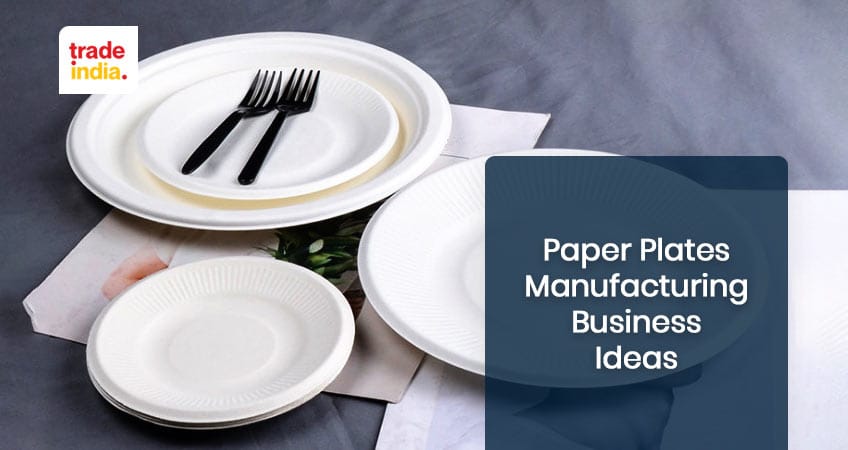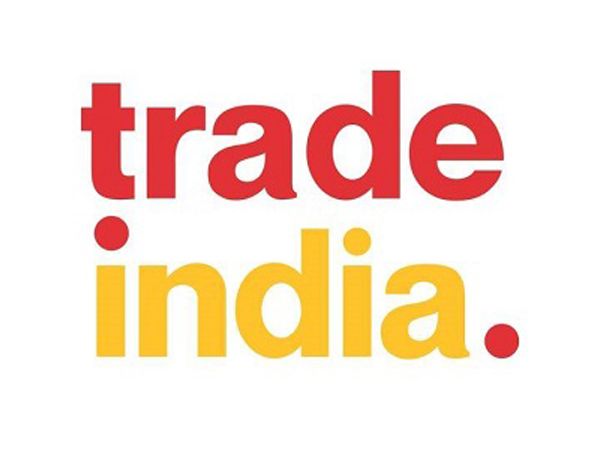Paper Plates Making Business Ideas

Introduction
Paper plates, which are made from a variety of paper-based materials, are commonly used for picnics, casual meals, and other events when the plates are to be discarded. Many distinct plates are available, each with a different size range, the manner they stand shaped, and the substances used to produce their texture. Evaluate the use because the food will be served before making a decision. Make sure that the texture and thickness of the plates are adequate to collect the secretions of moist or juicy vegetables, proteins, main dishes, or desserts before placing them on them. Styrofoam plates, which could be replaced for various food serving needs, may give greater commonalities for heavy or moist dishes.
Cleaning the microwave interior is a chore that no one enjoys. Place paper plates over plates and cutlery before placing them in the microwave to avoid possible splatter.
SPB Machinery's Paper Plate Manufacturing Equipment Offers Several Benefits
- Consistency: Bulk requirement and reliable output distinguish manufacturing areas. But you won't have to interrupt manufacturing for an infinite length of time if you use fully automatic paper cup-producing machinery. Gadgets like this are carefully designed to continue achieving results without sacrificing quality.
- There will be a reduction in costs: Throughout your tenure, you might save a significant amount of money if your system has the maximum level of accuracy and dependability with the least amount of human interaction. Sales volumes of plastic cups can be delivered rapidly thanks to these completely automated machines.
- Flexibility: SPB machinery's well-designed Fully Automatic Machines enable the creation of new orders while also being able to quickly meet previous needs.
How much money would you get back?
To make money, you must first make investments. You may not be happy with your first return if you've had a large investment, but if your money invested is small, you may be fine with it. The profitability of this business hinges on more than just manufacturing. You must have a network of distributors to distribute your product.
If you want to receive a wide range of costs for your product, you should have a vast network. Make sure that you are selling straight to the end-user.
Start-up Business Idea: Making Paper Plates
- Expenditure Necessary
- Renting out land or a property
- Manufacturing Method
- Raw Material
- A registration processes
- Power supply
- Water
- Paper Plate Making Machine
- Product Promotion is an Important Task
- Employees
1. Expenditure Necessary
The Paper plate manufacturers exist with as little as Rs 10,00,000 in the capital. This would be the minimum necessary you'll need to buy equipment and supplies for your manufacturing facility. Yearly revenue of Rs 66,00,000 can be expected. Due to the significant volume of sales, a limited company is recommended for your paper mill.
With the commencement of MUDRA Yojna, the Indian government is granting loans of up to Rs 50,000 for those who are starting a small company. You can apply for a loan if you have a strategy and the necessary paperwork.
2. Renting out land or a property
A paper plate production line doesn't require equipment. A room that measures between 250 and 500 square feet suffices. This will fit your equipment well, plus there's plenty of room inside for materials and shipping containers.
Approximately 250 – 500 sq ft of land is needed.
around 8000 to 10,000 rupees
Please keep in mind that a location near major marketplaces and businesses will make it easier to sell your firm. Remember to check the rental property's necessary documentation, licenses, and permissions as well.
3. Manufacturing Method
With the greatest equipment in the industry, you can produce plastic plates in a range of forms, sizes, and patterns using specialized dyes. The press must be packed with dyes, papers, and polyamide layers before the dye can be warmed to the right temperature.
The paper will take on the desired shape when the appropriate force is exerted on the materials placed. To get the proper form and appearance, the sheet plates are collected, sliced, and rippled. 30,000 to 40,000 can be produced in a day at a normal, small-scale production operation.
From the cognitive perspective, we examine the plate's shape and size. There are a variety of paper plate price types and sizes to choose from, even though the equipment itself is the same.
4. Raw Material
To manufacture plates, the cost of paper material varies depending on parameters such as GSM, kind, and quality.
Rolls or sheets of these basic materials are available.
In the production of paper plates, several raw materials including kraft paper, stationary plates, and laminating sheets are employed.
From 70 GSM to 200 GSM, kraft paper can be found for purchase.
Between 70 GSM and 140 GSM, there is a variety of sitting plates to choose from.
Laminating paper or film paper is used to cover the table's surface.
There are a variety of film designs to choose from. Silver and Gold films were the most often used laminating papers. Local scrap stores may be able to supply you with a large amount of paper at a very low cost per kilogram. It is possible to buy a quintal or 1000 kg of paper for Rs 5000 to Rs 7000.
5. A registration processes
Establishment of a company (Private, Public, LLP, Sole Proprietorship, etc.)
- A business license
- Enrollment in the GST
- Permit for Pollution Control
- Registering of TAN
This will be determined by your production capability and investment capital. You'll want to be sure you're using the one that applies to you. There are many small-scale paper plate production businesses that fall under the MSME category (Udyam).
6. Power supply
Electricity is as necessary as water for our survival. You must have enough power sources to operate the disposable paper plate maker and any other electronic equipment. For your machine to function properly, the electricity supply must be consistent and proper with the obtain satisfactory voltage.
7. Water
Paper plate manufacture necessitates a steady supply of water; therefore water plays a significant role. Water consumption in this area is relatively high, making this a disadvantage.
8. Paper Plate Making Machine
The cost of manufacturing equipment fluctuates. Paper plate creation per hour is the most typical variation. In terms of output, some machines produce between 1000 and 2,000 pieces per hour, while others produce between 400 and 7,000 per hour. Machines come in a wide variety of designs, qualities, and configurations. You should expect to pay between Rs 75, 000 and Rs 500, 000 for a typical machine.
Large thali plates are best made using this sort of equipment.
- What's the difference between one die and two? In the battle between death and multiples Die: Paper plates are made using a pressing tool called Die, which puts a lot of pressure on the paper. Due to the number of dies, the price of a paper plate machine is strongly dependent on its cost A double triple die machines are more expensive than single die machines. Producing more plates per hour is made possible by increasing the number of dies.
- Machines, both automatic and semi-automatic: The next decision to make when picking a paper plate maker is whether or not it should be automatic.
- Automatic paper plate-making system: To use a completely automatic machine, all you have to do is load the seating plates into the compartment and lay the paper roll on the dedicated rollers. One-click of a button and a finished paper plate is released into your hands in no time at all after the machine is turned on. Prices range from INR 80,000 to 150,000.
- Paper plate-making machine that is only semi-automatic: The paper plate raw material must be manually loaded onto the press in a semi-automatic variant. Once the press is complete, the paper plate must be removed and a new one loaded.
9. Product Promotion is an Important Task
To effectively advertise your goods, you'll need a solid marketing plan that you can put into action. To adjust your marketing plan, if necessary, it must be possible to detach your clients into several groups based on certain factors like their needs or form of payment.
If you want to ensure that your products are always available to your customers, you can make agreements with academic institutions, workplace cafeterias, and food canteens as well as cafes, restaurants, wayside hotels, coffee shops, and quick food centers, and event planning organizations.
10. Employees
This firm can function properly with no more than two or three people. A solitary shift or multiple hours is an option. There's no need to spend time or money on preparing them, as the method only necessitates a few fundamental abilities. It's sufficient if you can give them a broad picture and demonstrate how to use the device. If you're also in the manufacturing business, you'll probably want to bring two other employees with you. You may not have to spend a lot of money on this, but you'll need to spend some time teaching them in the beginning.
Conclusion
Developing the paper sector can help the world's economy thrive, eliminate food-borne infections, and increase the amount of paper that can be recycled. This means that revenue of 8,23,000 INR is generated per year. However, take into consideration that the profit margin might be affected by a variety of things. Your firm may also be affected by external circumstances such as stakeholders and partners, strikes, or epidemics such as COVID-19.
FAQs: Paper Plates
Q. Is it possible to make money selling paper plates?
Ans. The paper plate company is indeed successful. This is for several good reasons. Restaurants, bakeries, street vendors, quick food joints, and hotels all have a constant need for paper plates to meet this need. They have been used for a variety of events, including weddings and other social gatherings. The majority of them take place at any time of year.
Q. What is the price of a paper plate-making machine?
Ans. Starting at 40,000 INR, a semi-automatic paper plate maker can be yours. There is a price tag of roughly 1,50,000 Lakh Indian rupees for an activated plate device.
Q. What will be my first requirement for resources?
Ans. For a production plant to get off the ground, you need a large piece of land.
Q. Can I continue a paper plate business from my house?
Ans. A modest paper plate business can be started right in your own house. However, you'll need a lot of room for raw materials plus equipment storage.
